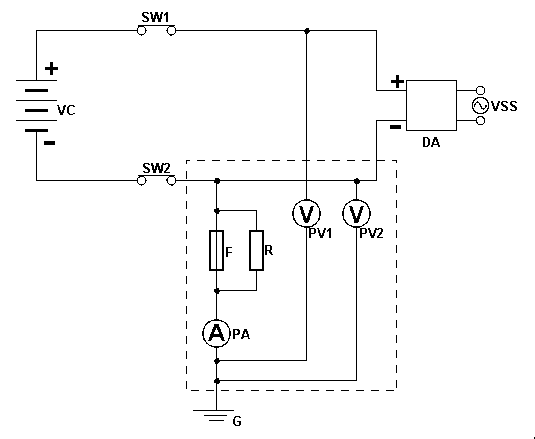PID (Potential Induced Degradation)-resistant circuit and monitoring device thereof
A circuit and grounding circuit technology, which is applied to emergency protection circuit devices, electrical components, and protection that reacts to fault currents, to achieve the effects of reducing the number of replacements, preventing safety accidents, and reducing operating costs
- Summary
- Abstract
- Description
- Claims
- Application Information
AI Technical Summary
Problems solved by technology
Method used
Image
Examples
Embodiment Construction
[0024] The present invention will be described in further detail below in conjunction with the accompanying drawings.
[0025] Such as figure 1 As shown, an anti-PID circuit includes a photovoltaic cell VC, an inverter DA, and a grounding circuit. The positive pole of the photovoltaic cell VC is connected to the positive pole of the DC input of the inverter DA through the positive pole relay SW1. Photovoltaic cell VC is the solar panel array. The negative pole of the photovoltaic cell VC is connected to the negative pole of the DC input of the inverter DA via the negative pole relay SW2. The inverter DA is used to convert the direct current into alternating current and then send the alternating current to the public power supply line VSS. The grounding circuit is connected between the negative pole of the DC input of the inverter DA and the negative pole relay SW2. The ground circuit includes a fuse protection circuit and a current sensor PA. The fuse protection circuit i...
PUM
 Login to View More
Login to View More Abstract
Description
Claims
Application Information
 Login to View More
Login to View More - R&D
- Intellectual Property
- Life Sciences
- Materials
- Tech Scout
- Unparalleled Data Quality
- Higher Quality Content
- 60% Fewer Hallucinations
Browse by: Latest US Patents, China's latest patents, Technical Efficacy Thesaurus, Application Domain, Technology Topic, Popular Technical Reports.
© 2025 PatSnap. All rights reserved.Legal|Privacy policy|Modern Slavery Act Transparency Statement|Sitemap|About US| Contact US: help@patsnap.com

